
The Eros statue in Piccadilly Circus is a well-loved symbol of London.
But behind the now iconic, almost hackneyed, sculpture is a history of controversy, hooliganism, errors and ruined careers. Here's a whole heap of trivia about arguably London's most famous statue.
1. It isn't actually Eros at all (but you knew that already...)
Most people know the statue isn't really of Eros, but Anteros, his twin brother. But that doesn't stop most Londoners referring to the statue by his erroneous name.
Sculptor Alfred Gilbert was commissioned to create a memorial to Anthony Ashley-Cooper, the 7th Earl of Shaftesbury, in 1886.

Gilbert spent a long time considering how to celebrate the life of Shaftesbury, a philanthropist and social reformer. Lord Shaftesbury campaigned against many injustices, such as child labour conditions, limiting child employment in factories and mines.
For five years Gilbert considered various ideas to celebrate the charitable life of the Earl. He eventually decided on a fountain, topped with the winged figure of Anteros, the ancient Greek symbol of Selfless Love.
Gilbert described Anteros as portraying "reflective and mature love, as opposed to Eros or Cupid, the frivolous tyrant."
But the English, with our unhelpfully generic singular word for 'love', whether its love for your grandma, your hot new boyfriend or your baby niece, struggled with this idea. The boy with the bow and arrow was Eros, and neither explanations nor rebranding exercises were going to change that.
2. It's modelled on a 15-year-old from Shepherd's Bush
The model for Anteros was Gilbert's diminutive Anglo-Italian studio assistant, Angelo Colarossi.
According to the 1881 census, the large Colarossi family lived at 14 Masboro Road West, in Shepherd's Bush.
Angelo's dad was also an artist's model, and you can see the pair of them in Frederick Leighton's 'And the sea gave up the dead which were in it.'

3. It was the first London statue to be cast in aluminium
Aluminium was a rather daring and novel choice for Gilbert's statue, but the results were worth it.
Terry Cavanagh writes, "Gilbert has here taken full advantage of the lightness and tensile strength of aluminium — such an extreme displacement of the figure's centre of gravity could not have been sustained by one slender ankle had bronze been used."
4. It was very controversial
When the Shaftesbury Memorial Fountain was unveiled by the Duke of Westminster on 29 June 1893, lots of people were unimpressed.
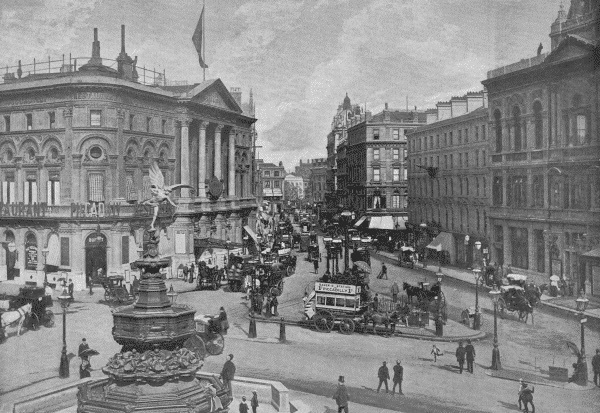
The complaints were plentiful: the memorial wasn't in a fitting part of town (Theatreland was seen as rather vulgar back then); the statue was too sensual to be an appropriate tribute to the respectable Earl.
One society periodical considered that 'the figure on the summit' was 'hideous, indecent and ludicrous', and the memorial was 'ugly, pretentious, unsuitable, and a decided nuisance.'
An attempt to rename the statue 'The Angel of Christian Charity', deemed to be the closest approximation of 'Anteros' in English, in order to quell those being sniffy about the nude boy on top, totally failed to catch on.
5. It was originally intended to be a drinking fountain
As well as the rather obvious naked lad on top, there was a whole lot of of fuss about the 'fountain' beneath too.
The long, drawn-out debacle about shape and size of the bronze base of the fountain is recorded here on the British History website. In short: the base is too small, and the fountain failed to do what the sculptor intended: create a dome of water with the mythical figure 'floating' on top.
Instead, it splashed everywhere, causing already mucky Victorian streets to look even more filthy.

Cups which were attached to the memorial, so people could drink from the water fountain, were nicked almost immediately.
'On the opening day', Gilbert recollected, 'there existed eight drinking cups of more or less elaborate fashion... secured by a very carefully hand-wrought chain, specially designed and made for the purpose.
The next morning I believe only two of the cups were left, but the fragments of a third were found carefully broken and deposited in one of the basins, carrying clear evidence that the damage had taken some considerable time to effect, and was no doubt meant as a malicious criticism, if not a protest against the work itself.
These inauspicious beginnings were to prove all too prescient.
6. It's always attracted hooligans
There's something about this particular piece of public art that just seems to attract vandals.
Men have been coaxed down from their perches or broken bits off the statue throughout the decades: in 2016, 2012, 2011, 2002, and in the 1990s and 1980s.
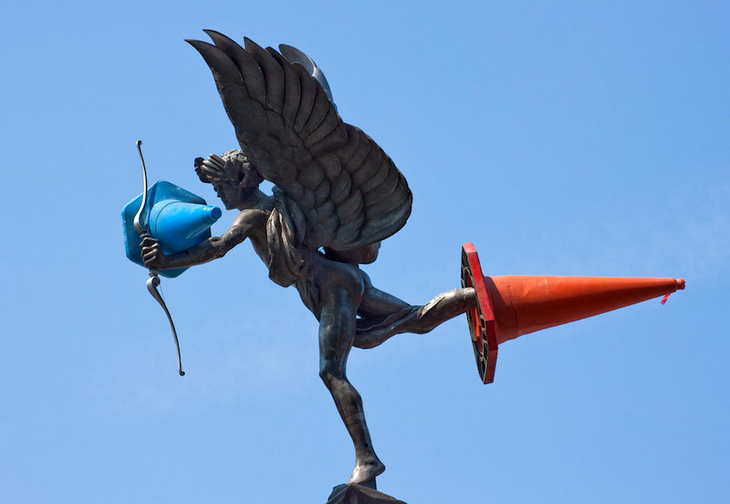
Only a fortnight after it was unveiled back in 1893, a gang of 30-odd boys turned the memorial into 'a sort of pandemonium chasing one another round the steps, stopping only to fill their mouths with water from the lower basin to eject it over their fellows'; others were 'daubing the newly-erected stonework over with mud; the steps were disgracefully dirty'.
In the end, the then County Council had to appoint one of its park keepers to protect the memorial.
7. It was a financial, career-defining disaster
Poor Alfred Gilbert. His commission was for £3,000, but the memorial cost him around £7,000; mainly because of the expensive copper base.
His expenditure on the work marked the beginnings of financial difficulties, from which he struggled to recover. In 1901, Gilbert fled the UK for Bruges. His wife left him in 1904; she later died in a mental hospital. Gilbert only returned to live in England in 1926.
In about 1911, Gilbert wrote, 'I am the unfortunate author of the fountain, and I designed it years ago and ruined myself for a sentiment..'
He was clearly haunted by a sense of failure around the work, not least because he felt he'd done Lord Shaftesbury, and the great man's honourable works, something of a disservice.
Why not pull down the whole work, and reduce it to copper, of which metal there are hundreds of pounds' worth, and place the sum realized by the sale to a nucleus fund to provide night shelters for the poor creatures who year in and year out congregate on the Embankment nightly?
8. It probably doesn't contain a pun on 'Shaftesbury'
It's a nice rebus. This archer is missing an arrow; he must've buried the shaft somewhere.
In 1893, the Shaftesbury Memorial Committee said firmly that 'The fountain itself is purely symbolical, and is illustrative of Christian charity', making no mention of the winged figure, whose downward pointing bow British History points out, 'has been, and still is, widely regarded as forming a rebus upon the name of Shaftesbury.'
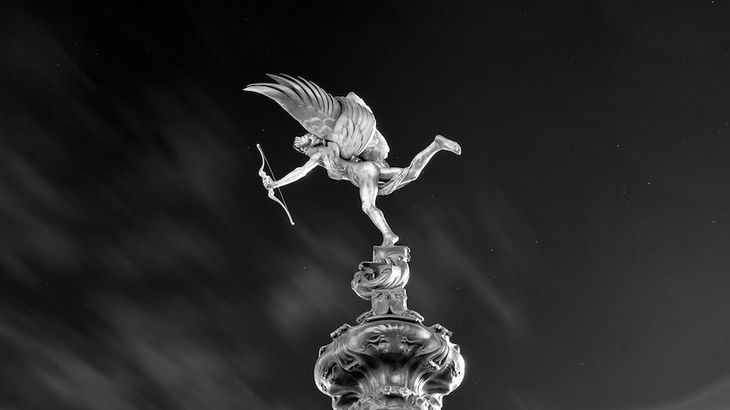
In 1903, Gilbert himself recalled that after the unveiling there 'followed a storm of abuse of the work itself... the figure surmounting the whole design was stated by some ingenious Solon as intended to convey a silly pun on the name Shaftesbury, because it has discharged its shaft from the bow.'
But why let the facts in the way of a good play on words?
9. It's moved about a bit
In February 1925, Eros was moved from his roundabout in the centre of Piccadilly to make space for the construction works enlarging Piccadilly Circus tube station.
He flew over to Embankment Gardens, where he stood on a new concrete stand: the base was stored in Clapham.

Eros was returned to Piccadilly Circus in 1931, in a different position to the east of the circus, with a slightly higher base.
During the second world war, the statue was removed from his copper base again, this time to Cooper's Hill in Egham. The base remained boarded up in Piccadilly Circus.

On 28 June 1947 Eros was returned to Piccadilly Circus in heavy rain and in the presence of several thousand spectators. He's been there ever since.
10. It was once made into a snowdome
In 2013, in an attempt to protect the statue from Christmas vandals and to simultaneously provide even more advertising opportunities in Piccadilly Circus, the statue was covered in an inflated plastic bubble, complete with fans and snow inside, making a 'snow-dome'.

As with pretty much every other aspect of this seemingly cursed statue, the scheme was a failure, and the structure collapsed in strong winds.
This wasn't the first time attempts to protect the fountain from seasonal revellers had been put in place.
Way back in 1931, on New Year's Eve, Hugh William McKenzie, a clerk from Lewisham, climbed Eros and broke his bow and one of his wings: this seems to have been the first time an admirer, rather than a detractor had attacked the fountain.
By 1937, the County Council was regularly erecting 12-feet high hoardings around the fountain on New Year's Eve and for events like the University Boat Race and of the Association Football Match between England and Scotland.
If you chance upon Eros at Christmas time, you'll usually spot something added to the fountain to discourage idiots from climbing up it.
11. It's far from unique
There's not one, but four, Eros statues around the world.
A second casting in aluminium of the famous Piccadilly Circus fountain was commissioned by George Audley for Sefton Park in Liverpool, and unveiled in 1932.
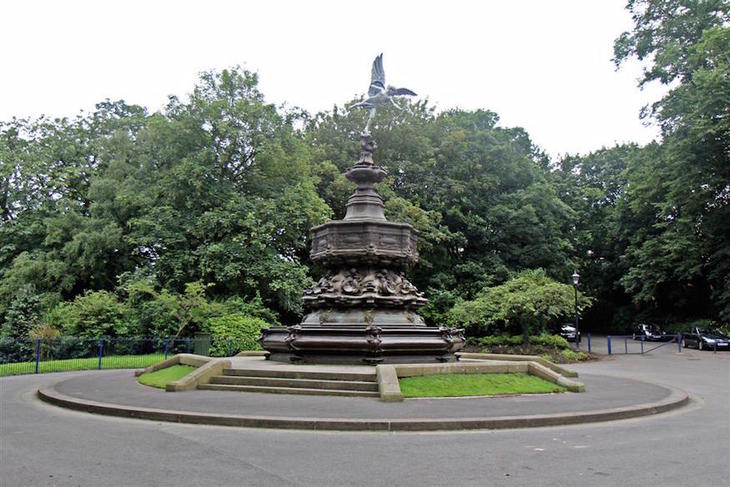
Unfortunately, the Liverpool Eros fell into a bad state of disrepair due to corrosion, vandalism and general neglect. Following extensive repair work, the bronze base was restored, and a replica figure, made of more durable materials, fitted in 2008.
The original second casting has been repaired, and was on display in the Eros Cafe at Liverpool's National Conservation Centre: after government cuts in 2010, the centre was closed, so this Eros is now in storage.
There's another cast in Fleetwood, near Blackpool, which also has an unhappy past; broken and neglected, and the subject of a row between its owner 'Mrs Fisherman's Friend' Doreen Lofthouse, and the council.
Finally, you can find the most fortunate version of this rather unhappy figure in Adelaide's Art Gallery of South Australia.
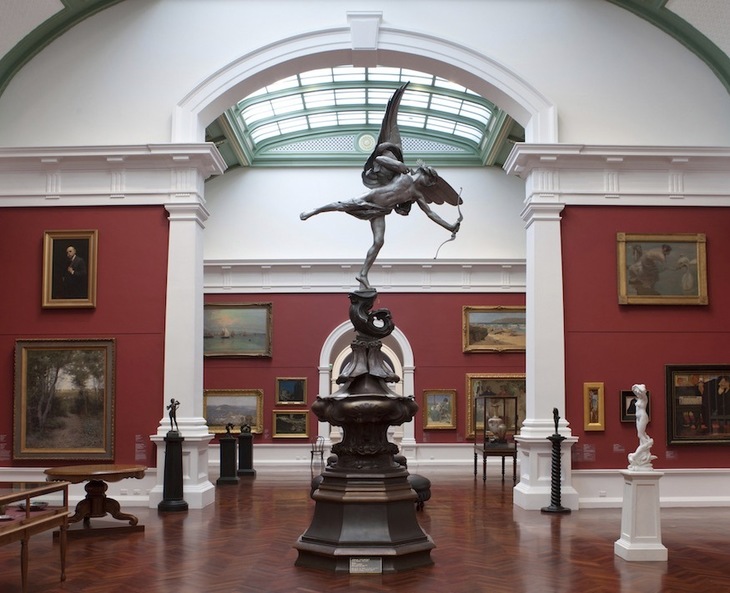
This Eros, cast in 1986-88, and acquired by the Art Gallery of South Australia in 1992, seems to enjoy the most peaceful surroundings of the pack, in their Elder Wing of Australian Art.



